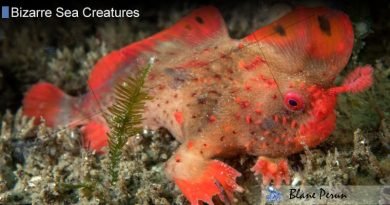Sunfish
Sunfish
The Sunfish (Mola mola), also known as the ocean sunfish, is one of the most extraordinary and recognizable creatures in the marine world. As the heaviest known bony fish, it can reach astonishing sizes—sometimes weighing over 2,000 kilograms and measuring more than 10 feet across. Despite its cumbersome appearance, the sunfish is an agile and efficient swimmer, inhabiting tropical and temperate oceans worldwide. Its unique adaptations and ecological importance make it a marvel of oceanic evolution and a vital component of marine ecosystems.
Introduction: Nature’s Giant of the Sea
The Ocean Sunfish derives its name from its habit of basking near the surface of the water, often lying sideways to soak up sunlight. Its Latin name, Mola mola—meaning “millstone”—reflects its rounded, gray body shape. Historically, this majestic species was revered in several cultures, including in Japan, where it was once considered a valuable offering to shoguns. Today, the sunfish is admired for its unusual biology, serving as a symbol of oceanic wonder and biodiversity. Like the ethereal sea angel, it inspires continued fascination with the world’s marine life and underscores the need for conservation awareness.
Physical Characteristics
Body Structure and Appearance
The Mola mola features a laterally flattened, disc-shaped body, lacking a traditional tail. Instead, it has a structure called a clavus, a rudder-like appendage formed by the convergence of the dorsal and anal fins. Its tough, sandpaper-like skin can be up to 7.5 cm thick, providing both protection and hydrodynamic stability. The sunfish’s coloration ranges from silvery gray to brownish hues, with occasional mottling that helps camouflage it from predators.
Size and Weight
These gentle giants can reach up to 3 meters (10 feet) in length and weigh as much as 2,200 kilograms (4,850 pounds). Their dorsal and anal fins propel them in a distinctive, sculling motion, allowing for graceful navigation through open waters. Although their movements may appear lazy, modern tracking has shown that sunfish are capable of long-distance migrations and vertical dives exceeding 800 meters.
Habitat and Distribution
The Ocean Sunfish inhabits warm and temperate waters across the globe. Found in both the Atlantic and Pacific Oceans, these fish often occupy surface layers but can descend to great depths to regulate body temperature and hunt. Their range overlaps with diverse marine ecosystems, including areas where the deep-sea anglerfish thrives. This contrast between shallow-sunlit and deep-dark habitats highlights the remarkable adaptability of ocean life across vastly different environmental conditions.
- Depth Range: From surface waters to around 800 meters deep.
- Preferred Climate: Tropical and temperate regions worldwide.
- Behavior: Frequently observed basking at the surface, possibly for thermoregulation or parasite removal by seabirds and cleaner fish.
Diet and Feeding Behavior
Initially thought to be passive feeders, Mola mola have proven to be selective and efficient predators. They primarily feed on gelatinous zooplankton such as jellyfish, but studies show they actively choose energy-rich parts of their prey, discarding the rest. This strategy reflects a sophisticated energy conservation mechanism, enabling them to thrive in vast pelagic environments with limited resources. For comparison, the crossota norvegica jellyfish displays its own set of remarkable feeding adaptations, demonstrating how predator and prey evolve in tandem within oceanic food webs.
- Main Diet: Jellyfish, salps, ctenophores, and small crustaceans.
- Feeding Technique: Suction feeding using their small, beak-like mouths.
- Ecological Role: Help regulate jellyfish populations, contributing to ecosystem stability.
Reproduction and Lifecycle
The reproductive biology of the Ocean Sunfish is as extraordinary as its size. A single female can produce up to 300 million eggs in one season—the most of any vertebrate known to science. The eggs hatch into tiny larvae only a few millimeters long, resembling miniature pufferfish. These larvae undergo dramatic metamorphosis, growing into juveniles and eventually maturing into the immense adults that drift through open oceans.
- Reproductive Method: Oviparous, with external fertilization.
- Larval Stage: Planktonic, feeding on microscopic prey before settling into pelagic life.
- Lifespan: Estimated 10–15 years in the wild, with some individuals living longer in protected conditions.
Cultural and Ecological Significance
Throughout history, the Sunfish has occupied a unique place in human culture. In ancient Japan, it symbolized wealth and status, while Polynesian traditions regarded it with reverence, believing its death could bring misfortune to fisheries. Modern science views the species as a keystone of ocean biodiversity. By maintaining jellyfish populations and serving as a host to various marine parasites, the Mola mola contributes to nutrient cycling and supports broader ecological health. Insights from species like the sea angel further illuminate the interconnectedness of marine food webs and the importance of protecting all ocean life forms.
Conservation Status and Threats
The Ocean Sunfish faces multiple challenges due to human activities. Major threats include accidental bycatch in drift nets, marine debris ingestion, and vessel collisions. Plastic pollution is especially dangerous, as sunfish often mistake floating debris for jellyfish. Climate change and ocean warming also alter jellyfish abundance, affecting the species’ primary food supply. Conservation organizations are working to implement sustainable fishing practices and raise awareness about the vulnerability of pelagic giants like the Mola mola.
- Threat Level: Classified as Vulnerable by the IUCN in some regions.
- Conservation Measures: Marine protected areas, bycatch reduction initiatives, and ocean cleanup efforts.
Conclusion
The Sunfish is more than an oceanic oddity—it is a symbol of adaptation, resilience, and ecological balance. From its massive frame and sunbathing habits to its delicate role in the marine food web, the Mola mola embodies the vast complexity of life beneath the waves. By studying and conserving these magnificent creatures, we deepen our understanding of marine ecosystems and reaffirm our responsibility to protect them. Whether seen basking near the surface or gliding through the depths, the ocean sunfish remains a true marvel of nature—just as wondrous as the deep-sea anglerfish and crossota norvegica jellyfish that share its oceanic home.




